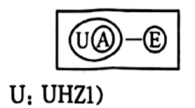There can be no doubt that Stephen King, New York Time's Best-Selling author, has found success in many aspects, but it wasn't always like this. King witnessed tragedy and horrors from the very beginning. When he was 2 years old, his father told his mom that he was going out to get cigarettes but in fact, he never came back, he had abandoned his family.
This left his mother Ruth to care for Stephen and his elder brother David on her own. Ruth was forced to move often, desperately looking for work as she was now the only provider of the family, and she had to rely on relatives most of the time. One day Stephen went out to play with friends and when he came back, he wasn't even able to speak a single word, it seemed he was hurt mentally or something, but he still got the courage to continue forward. It turned out that one of his friends was hit by a train and died, which left an emotional scar on him.
King, later on, dropped out of school due to some serious health concerns and was told that he had to enlist (入伍) again the next fall, which demotivated him too. Although Stephen King didn't see his childhood as something extraordinary or special, he did say that he was always fascinated by scary things. People used to acknowledge the King family by their love of literature, in fact whenever Stephen's mom had to go out, she didn't hire a babysitter, for the kids used to read novels to each other so they would not get bored. Stephen King's love of stories was developed from a very young age and he carried that tradition with his own children along with his wife Tabitha.
In 1973, Stephen King started his amazing journey of success when he published his first novel Carrie, which is scary. The rest followed from after that as he published many amazing books like The Shining, IT,Firestarter, andCujo.All of these books became instant classics and got their own movie and television shows adaptions.



